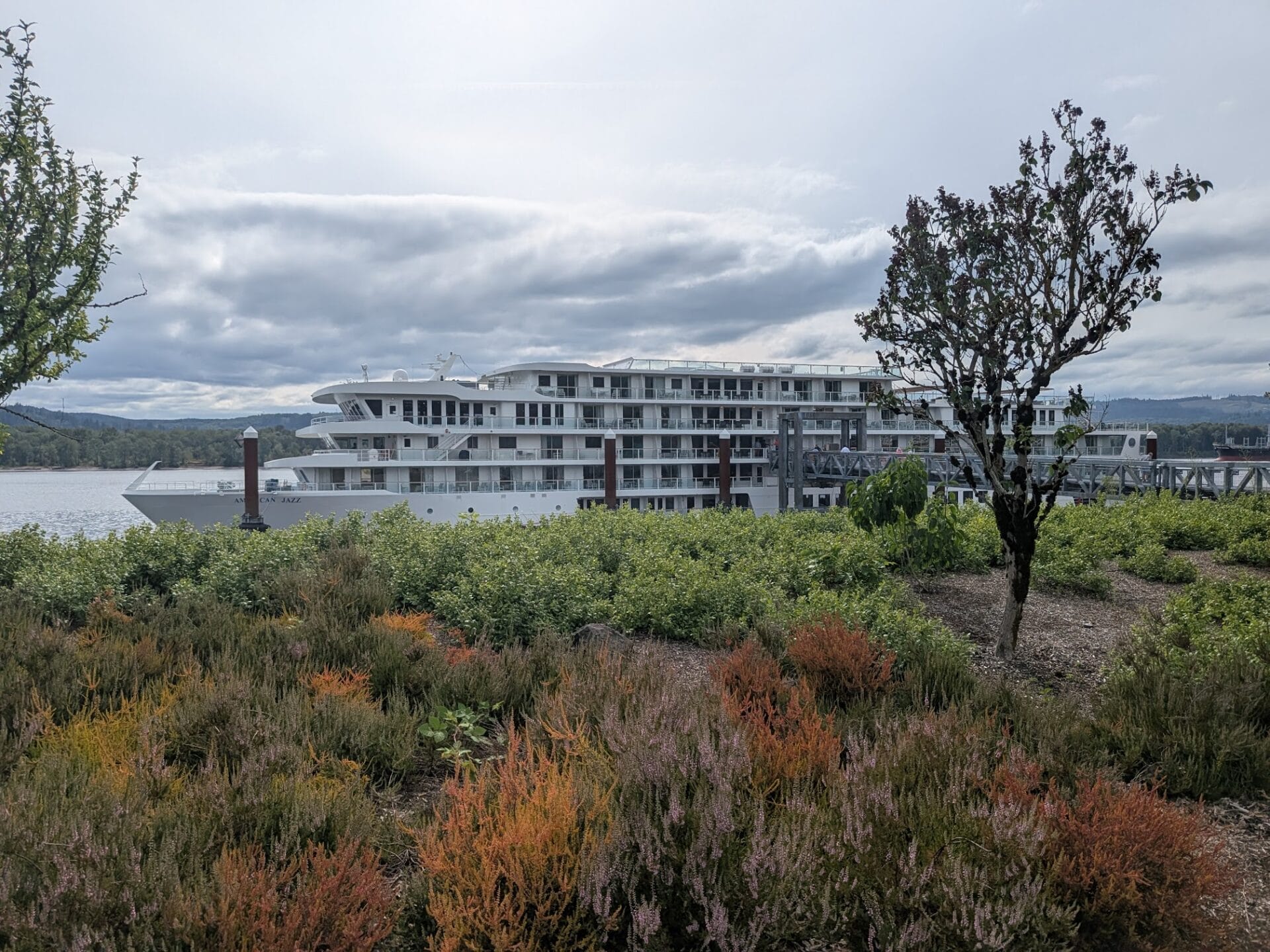Yesterday we transferred quickly and easily from Inle Lake to Mandalay. While we waited for the previous Viking passengers to disembark the ship, we enjoyed a coach tour of the city. We stopped briefly at the Mahamuni Pagoda on the way to the riverfront.
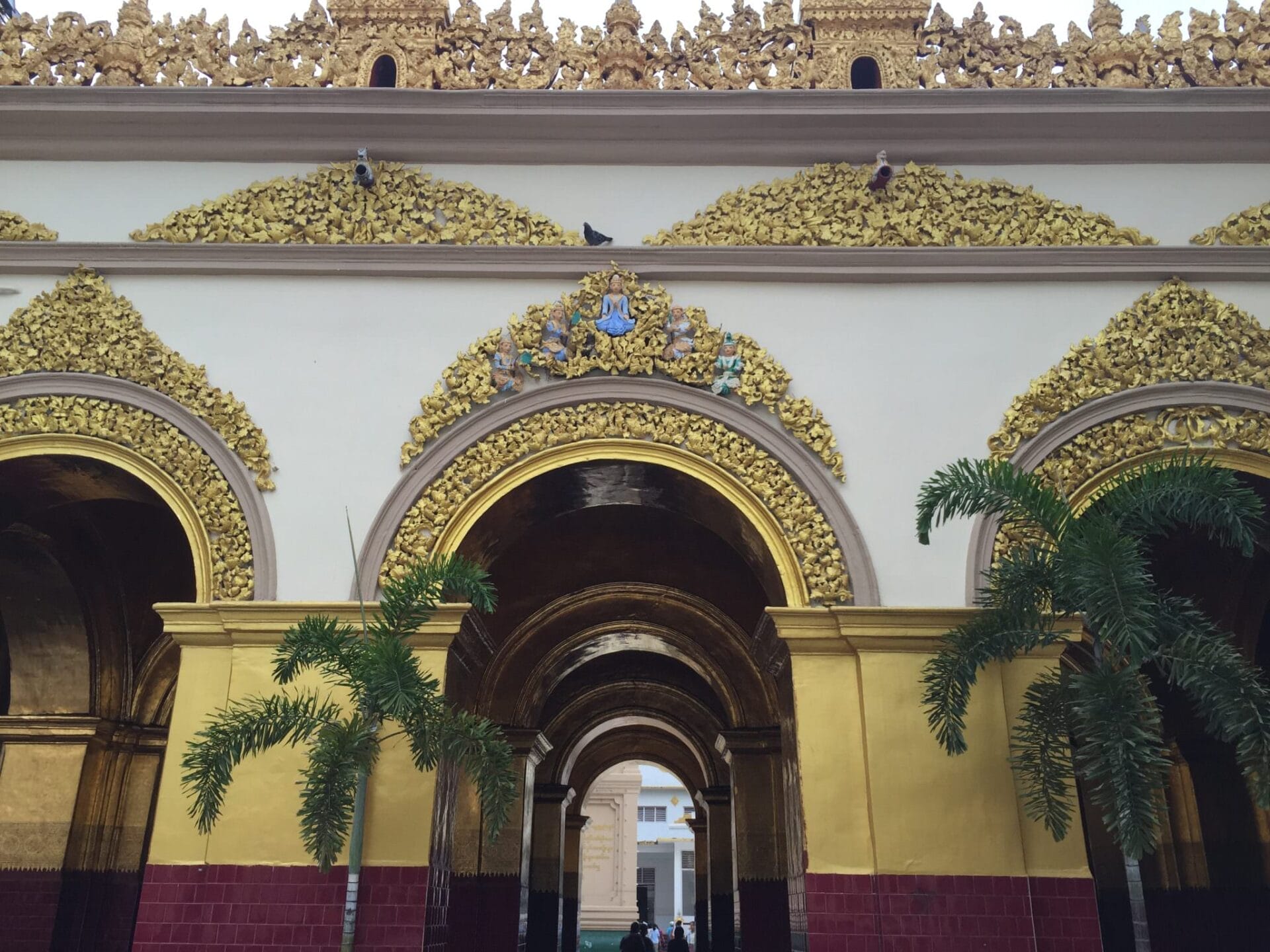
Every day this sacred site welcomes 30,000 – 50,000 pilgrims, according to our Program Director Nanda. The Buddha statue at the center of the pagoda was at one time a svelte young man. However, because of sacrificial offerings of gold leaf pressed on the statue over these many years, he now weighs nearly 2.5 tons. The Burmese people believe, energetically speaking, that he is a living being. Therefore, people bring him breakfast and brush his teeth in the morning. At night they massage the stress away from his muscles, tired after receiving all the pilgrims, and put him to sleep.
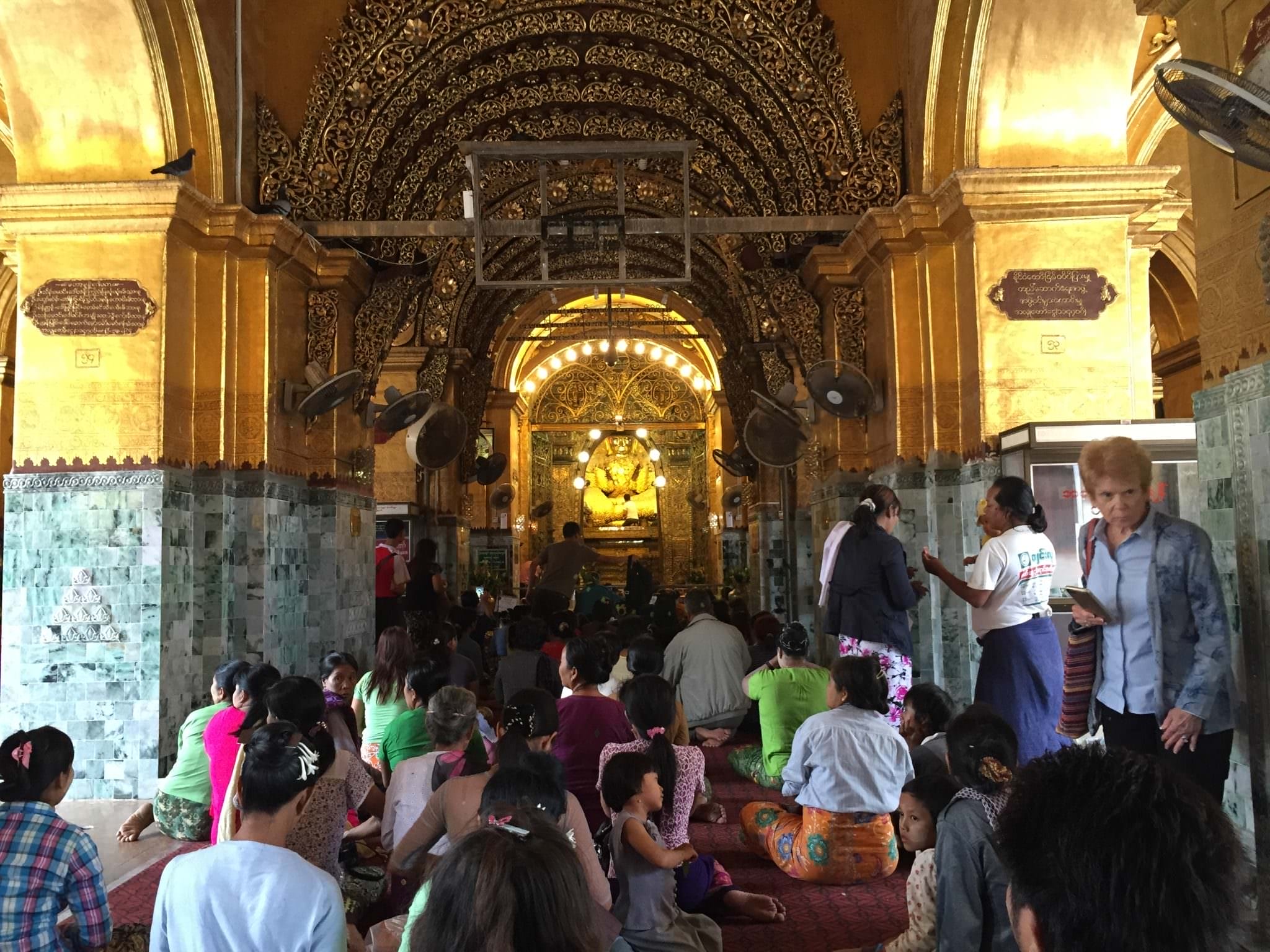
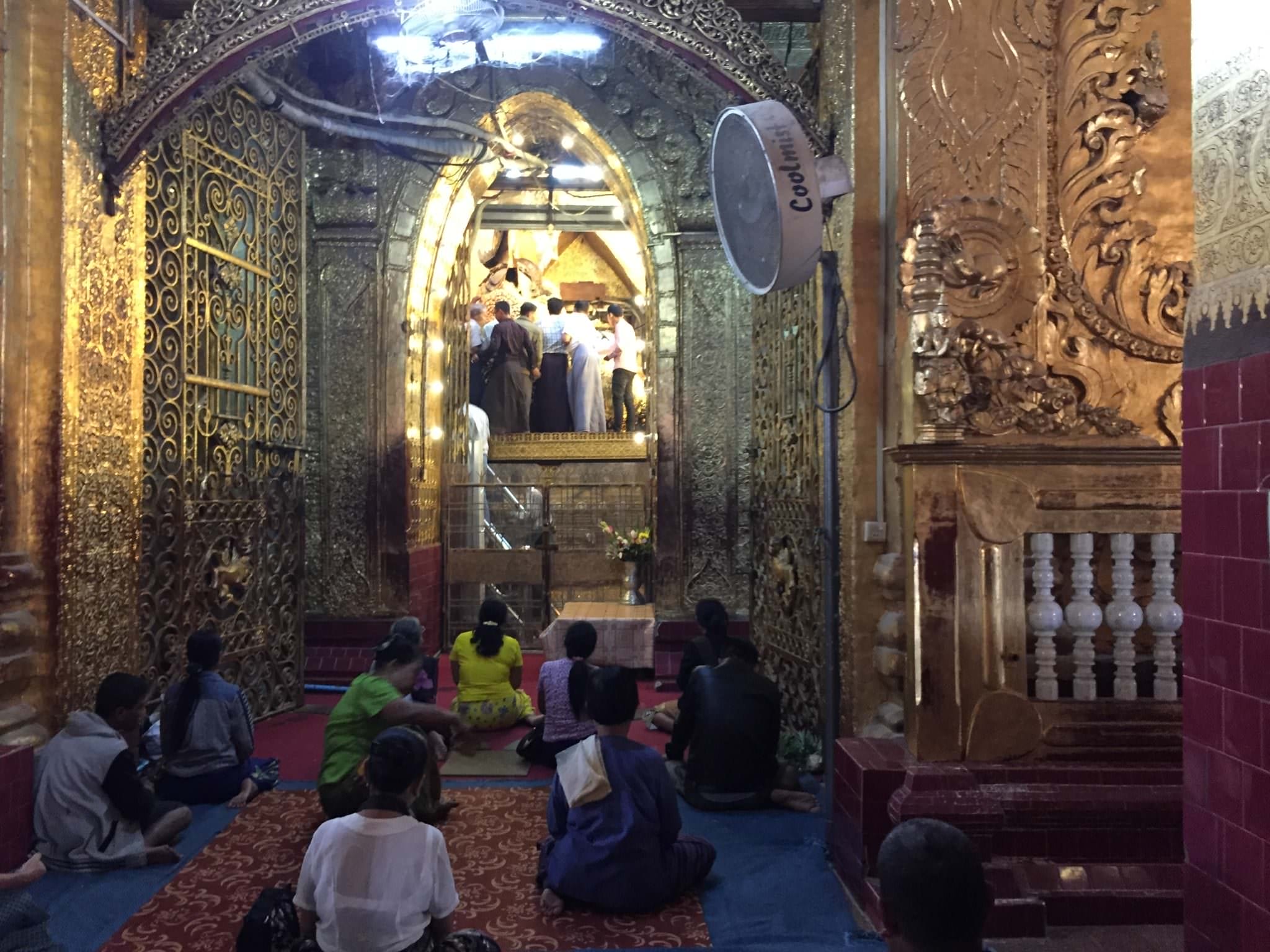
Today began with an 8 mile (30 minute) coach ride through residential Mandalay on our way to the Golden Palace. At one time the palace was covered entirely with gold leaf (naturally). Weather and time have worn off the ornate sheen. The structure is back to it’s original teak wood. We were told it’s now used as a monastery, but I saw only tourism placards and no sign of residential life. First, a glimpse of Burmese life on the way there…

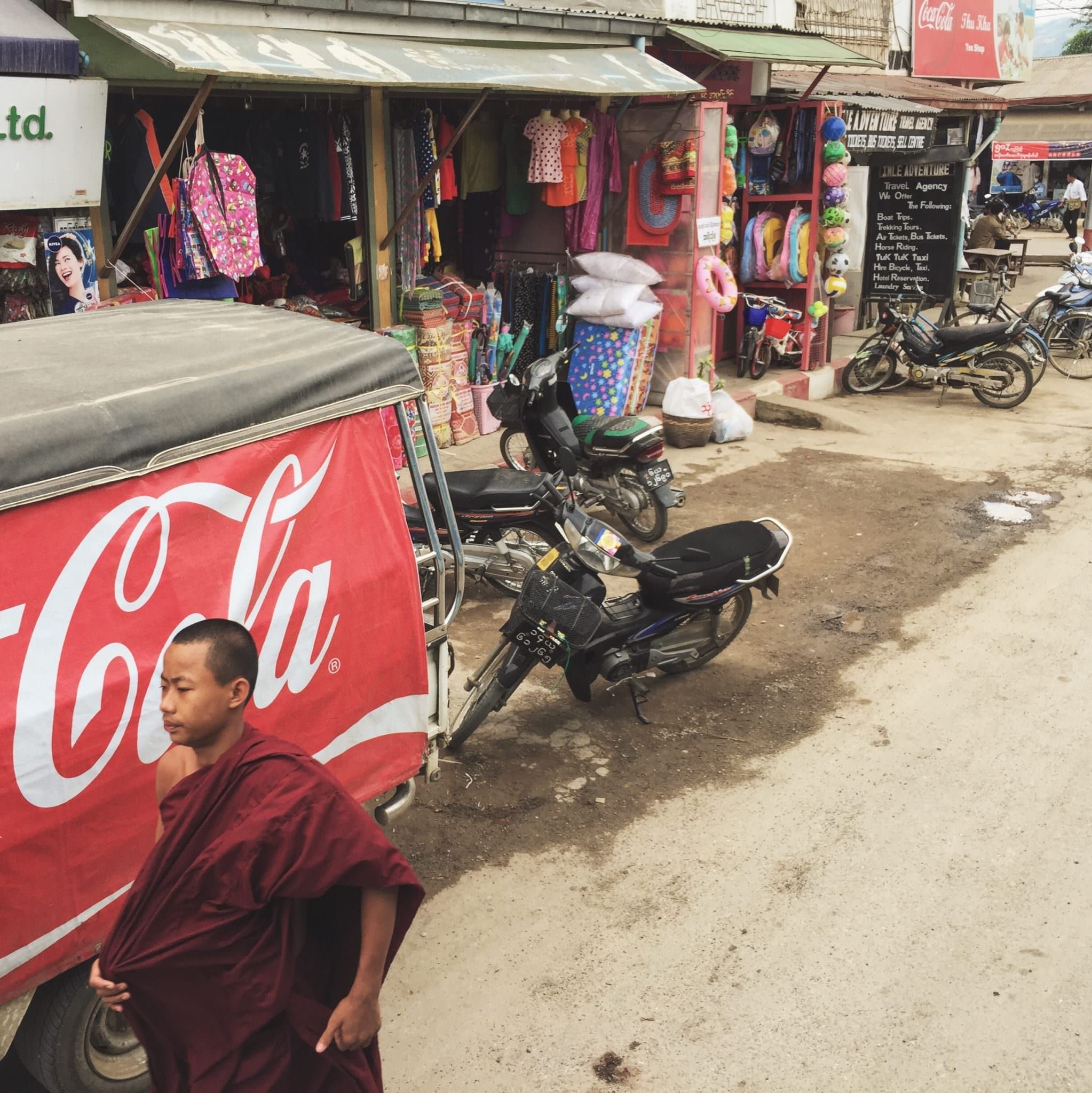
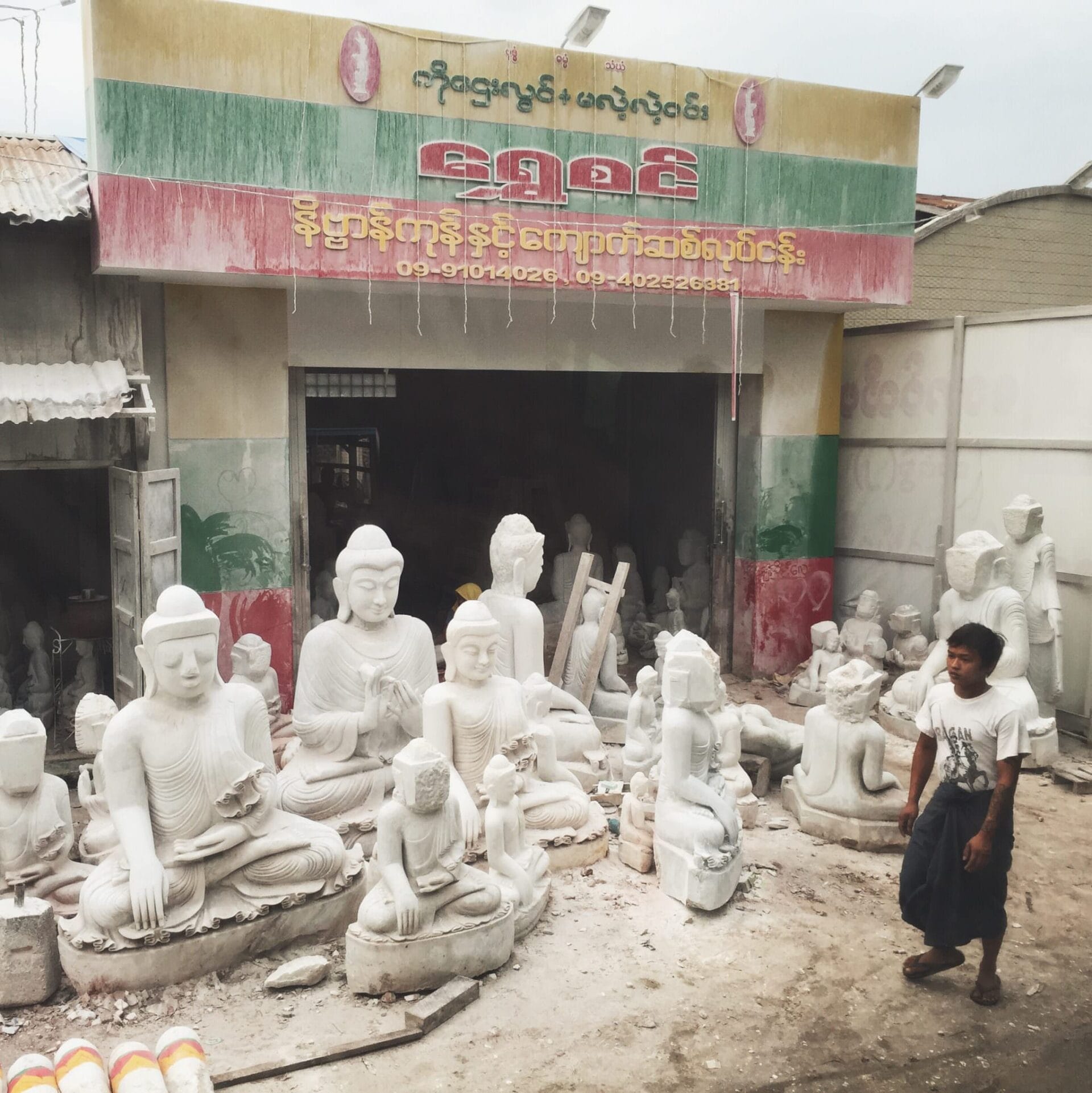
Once we arrived at the Palace, the ornate teak carvings stood out immediately. Similar to stations of the cross in Catholic iconography, they move around the space telling the story of The Buddha’s achievement of nirvana. There was of course a Buddha in the center of the space, but once again women were not allowed to enter. I stuck to the perimeter and enjoyed the woodwork.
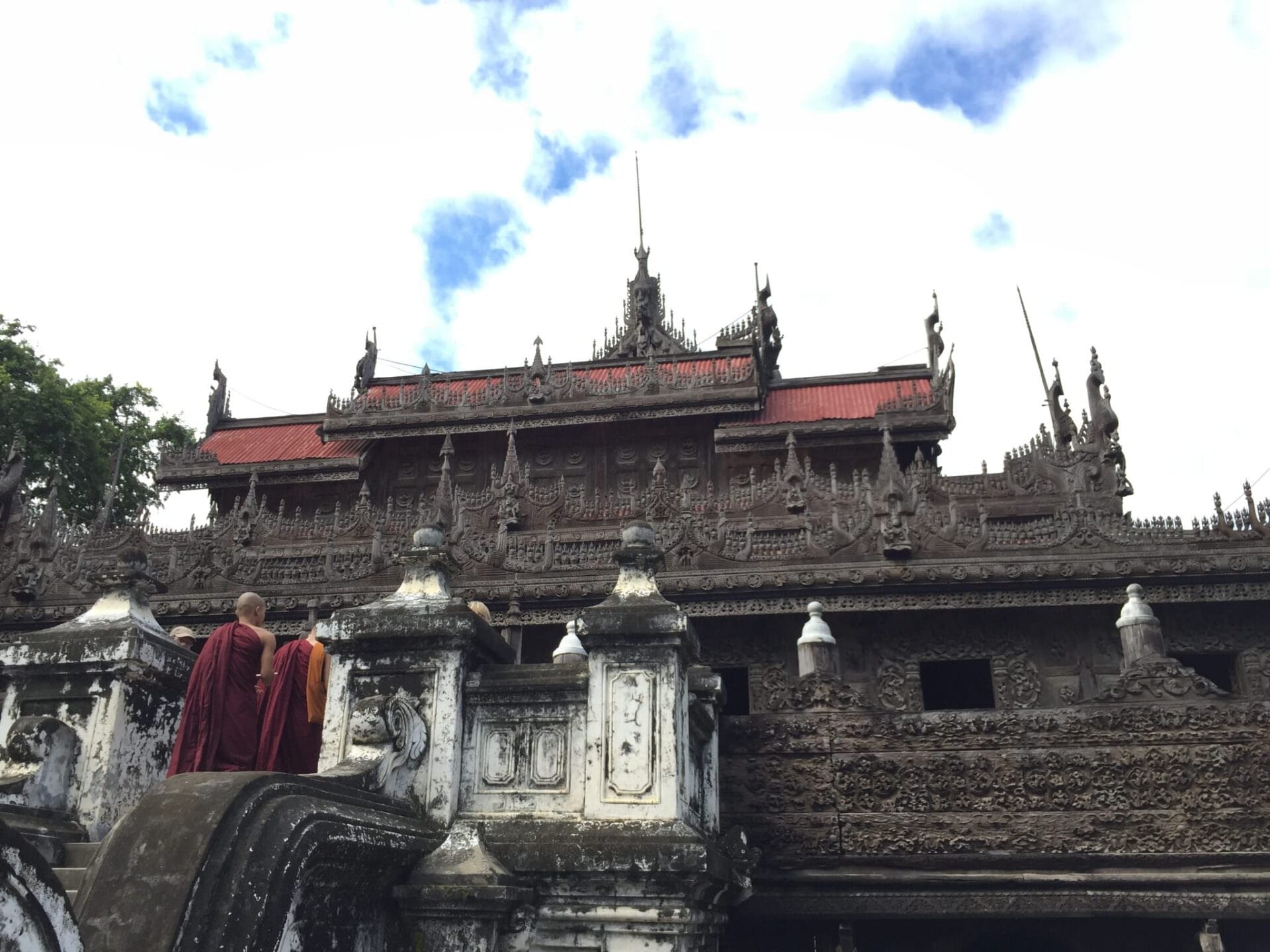


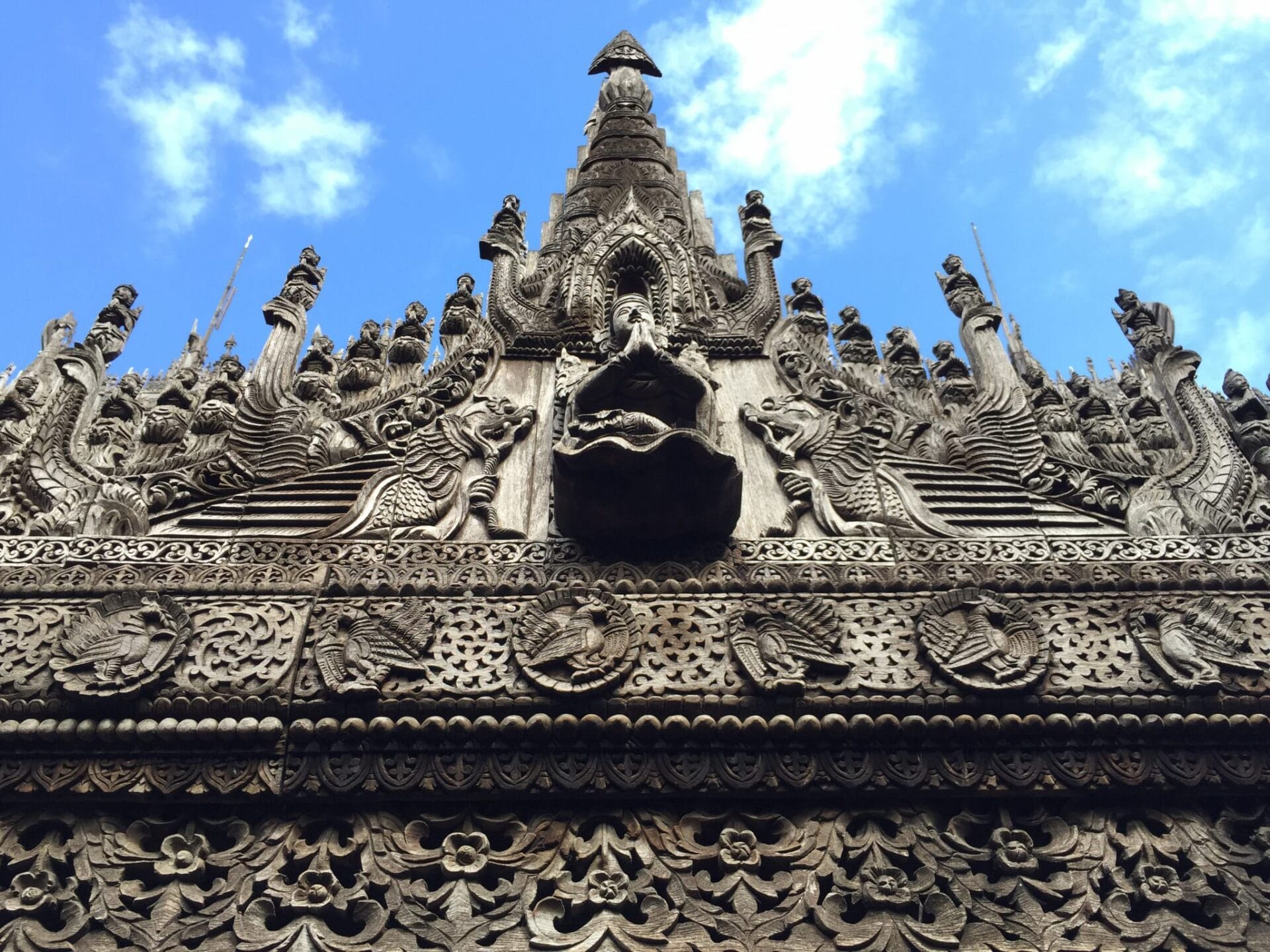
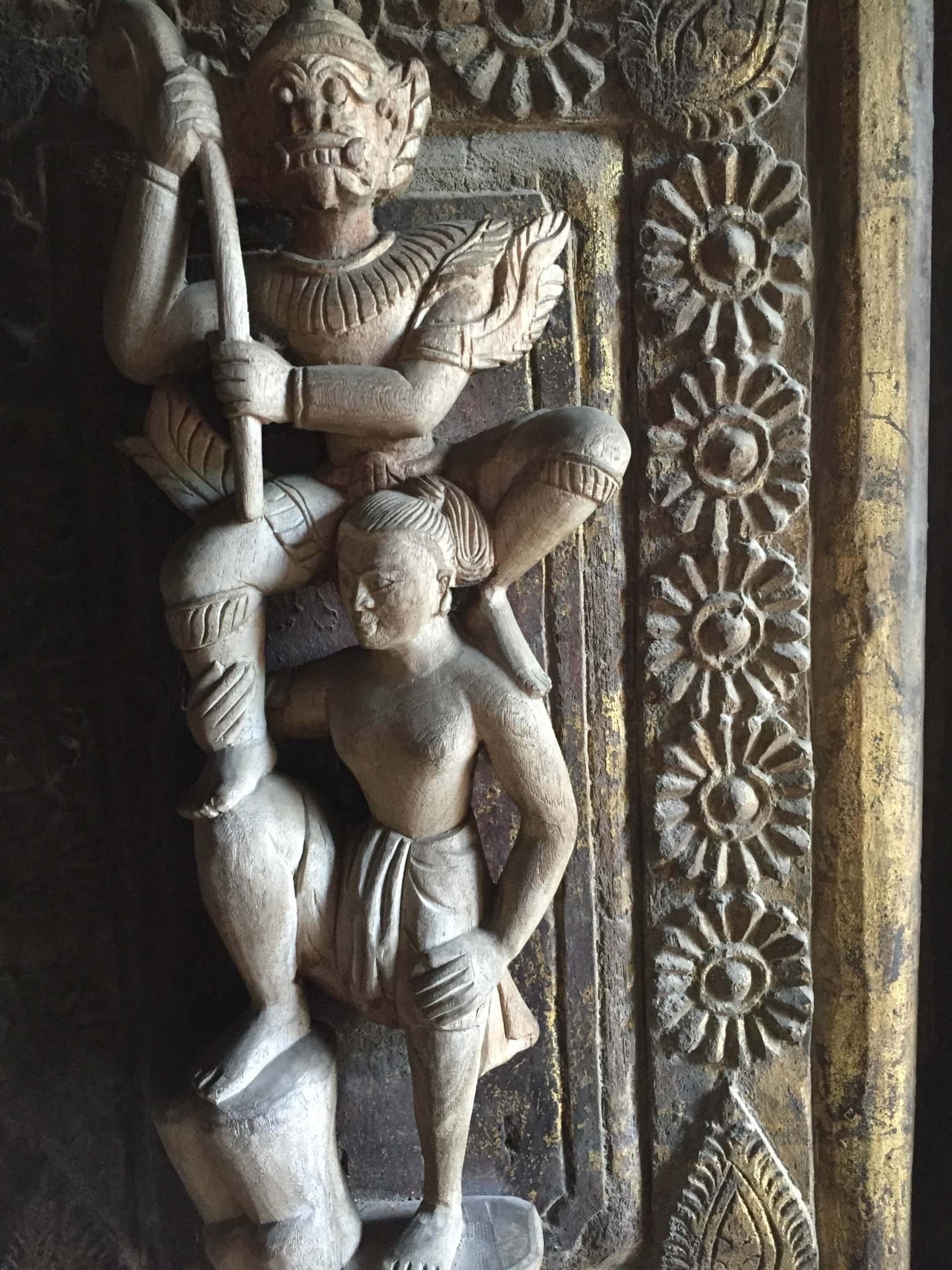
When we finished our photographs at the Palace, we walked a short distance to the Kuthodaw Pagoda. Kuthodaw is a UNESCO World Heritage site housing the largest book in the world – and it does so in the most fascinating way imaginable. The book is the Tipitaka, i.e. the canon of Theravada Buddhism. It was commissioned in 1860 and completed 8 years later. Neither words nor photos to it justice…just another reason to visit Myanmar.
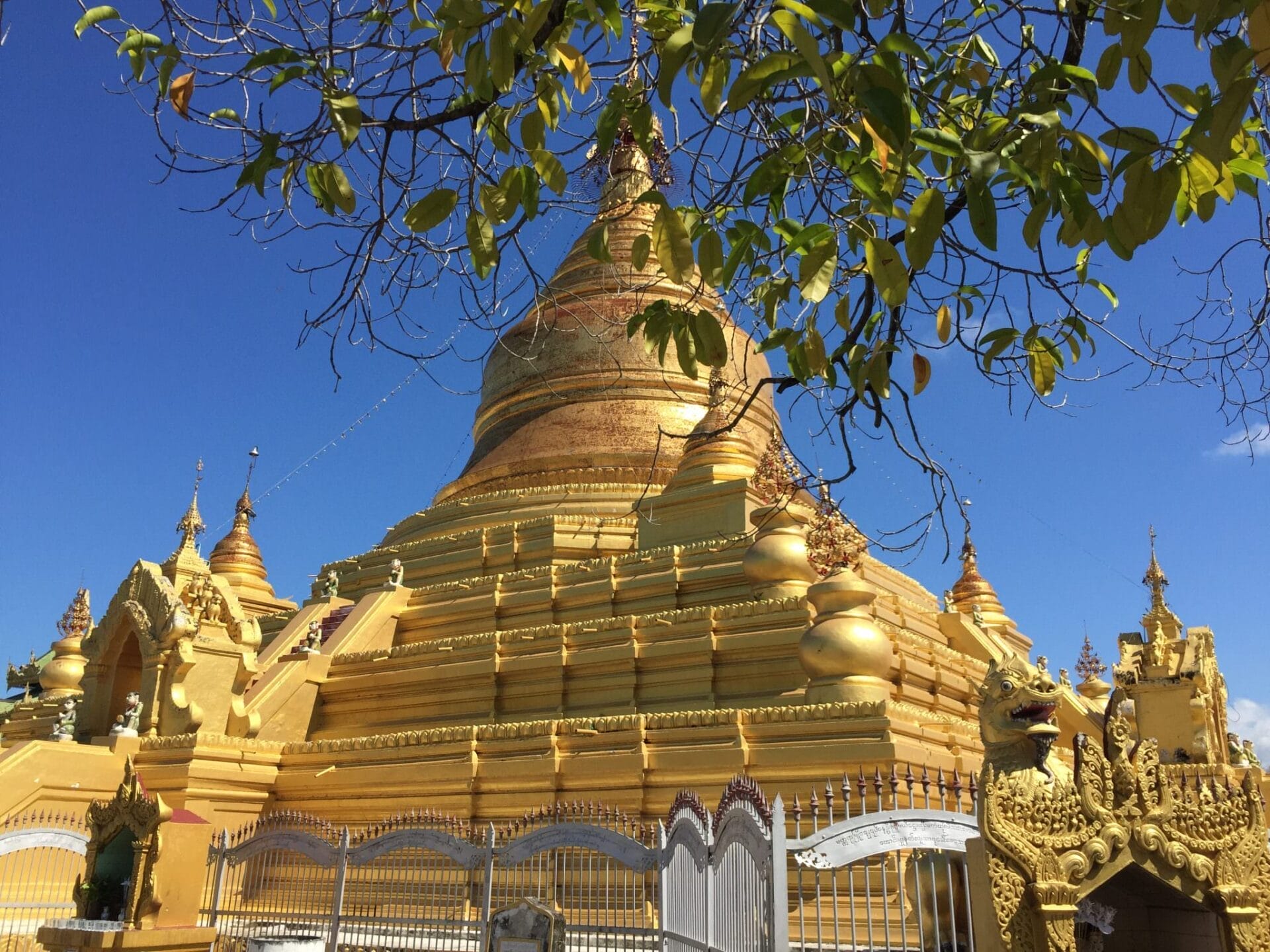
The central gold-leafed Kuthodaw stupa, pictured above, is surrounded in every direction by tidy rows of small white stupas. There are 730 white marble stupas in total. Within each of the white stupas is stone tablet, engraved on both sides. I was too aghast at the scale and uniqueness of it all to capture proper tour notes. With apologies for my poor journalism, I must rely on Wikipedia to paint the picture:
The stones [book pages within an individual stupa] are arranged in neat rows within three enclosures, 42 [white marble stupas] in the innermost, 168 in the middle and 519 in the outermost enclosure. Each stone [book page] has 80 to 100 lines of inscription on each side in round Burmese script, chiselled out and originally filled in with gold ink. It took a scribe three days to copy both the obverse and the reverse sides, and a stonemason could finish up to 16 lines a day. [In total the book] has 730 leaves and 1460 pages; each page [stone] is 3.51 feet wide, 5.02 feet tall, and 5.1 inches thick.
Come with me into the photos and try to imagine the scale of 730 white stupas, containing one stone book page each.
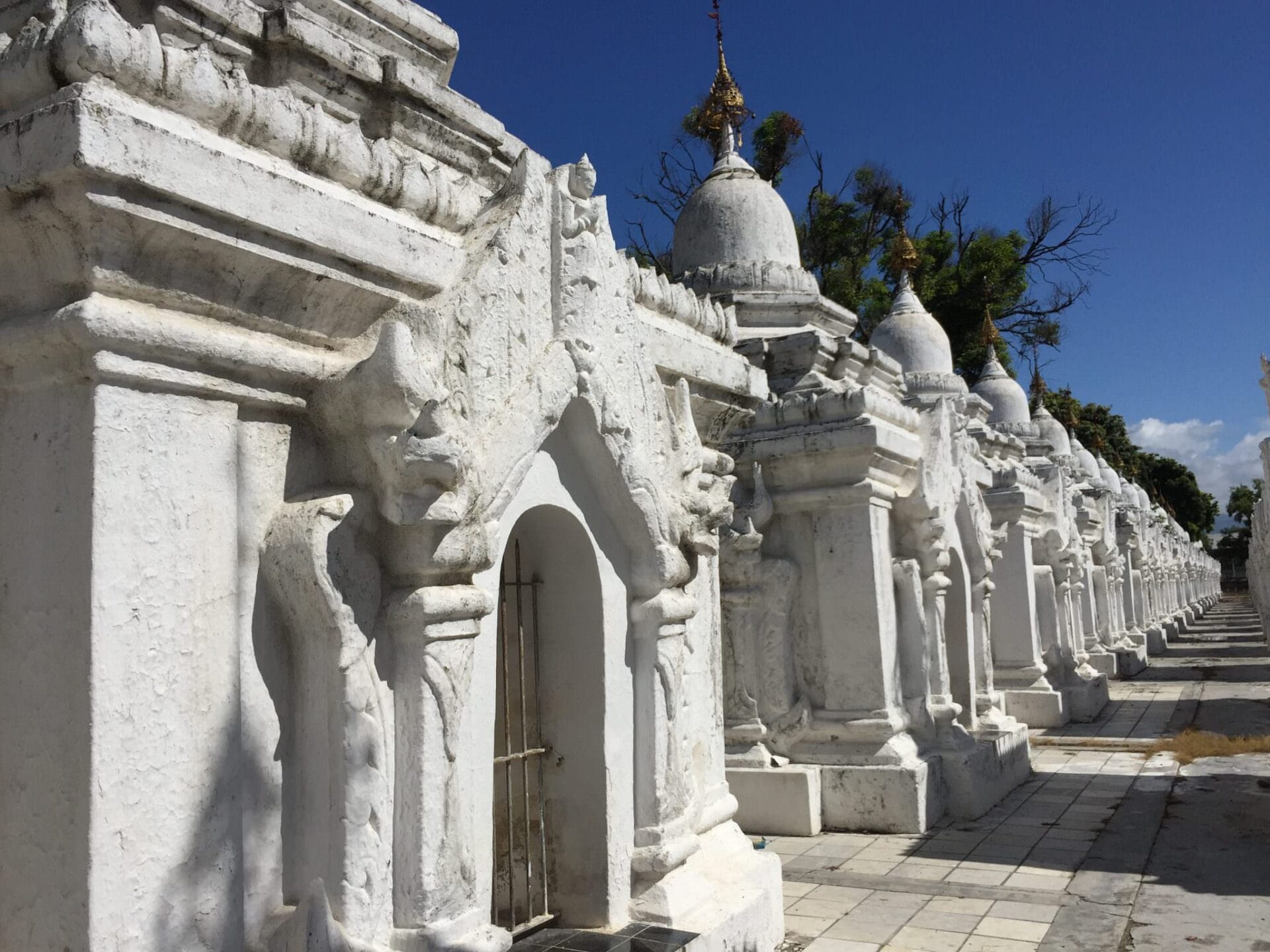
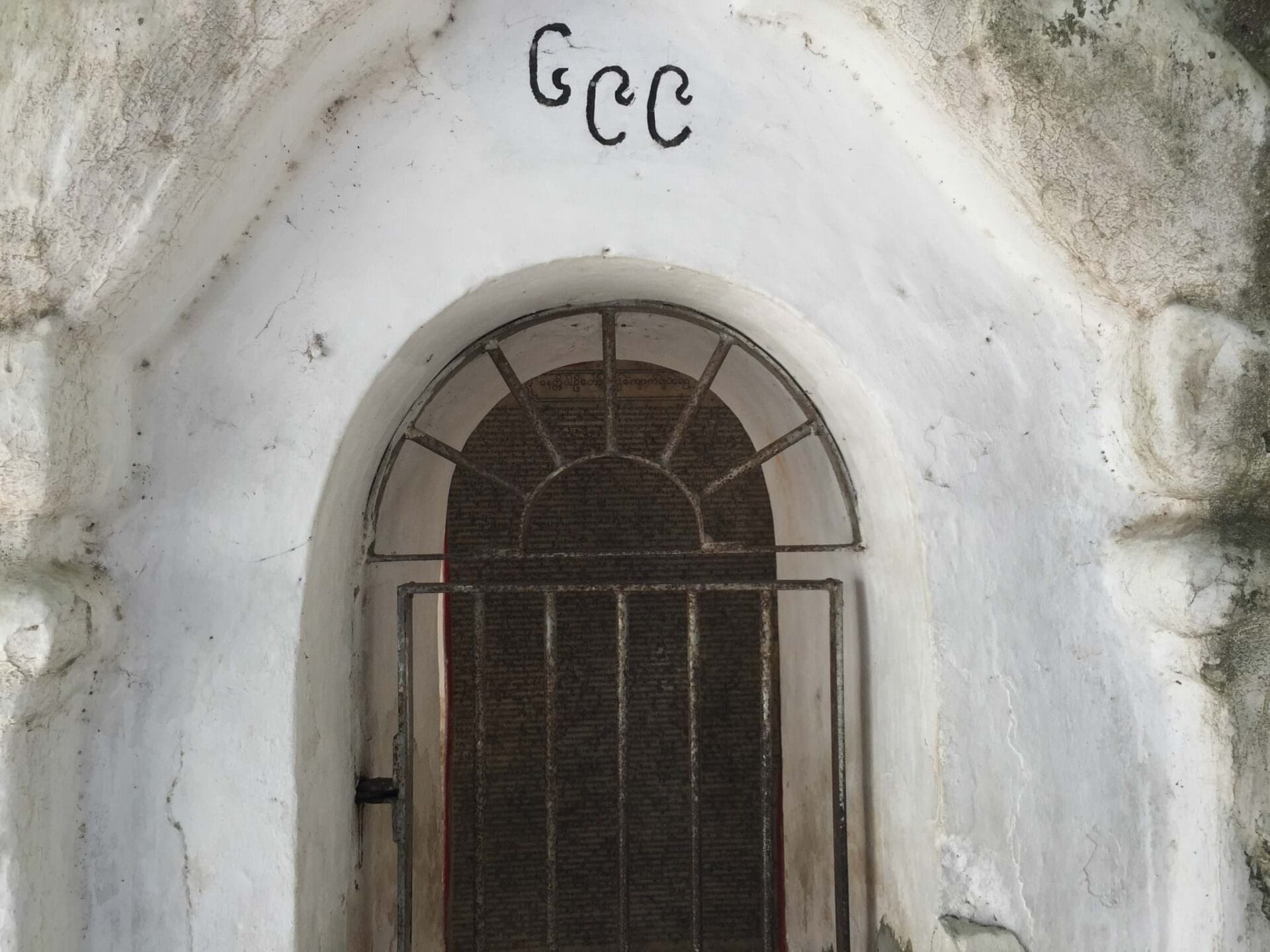
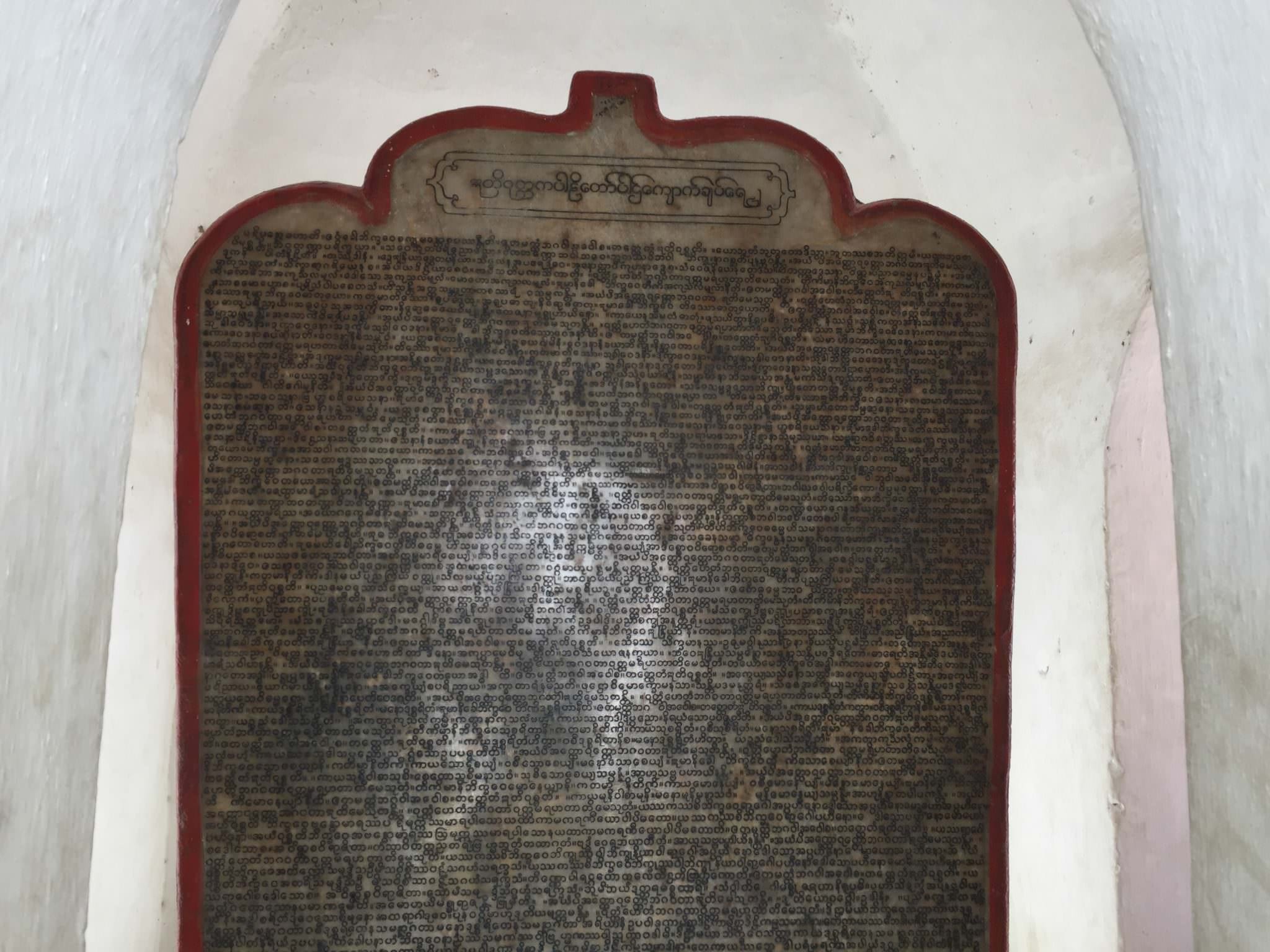
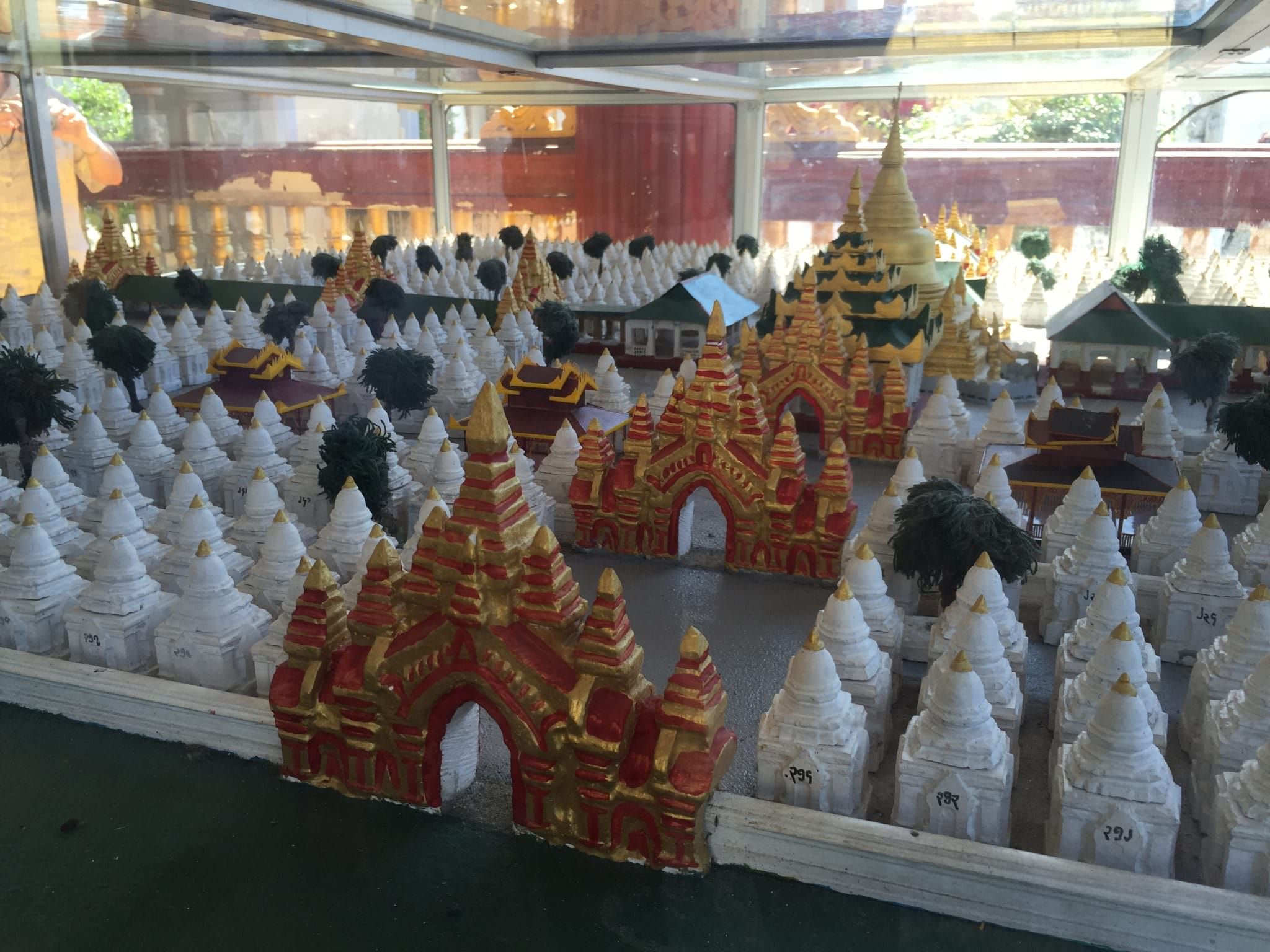
One of the highlights of my entire trip happened on my way out of the Kuthodaw complex. I share this not as journalistic coverage of a sanctioned Viking tour, but as a meaningful cultural experience from one traveler to another. A unique sight to prepare for when visiting Myanmar is thanaka cream worn by men, women, and children. Thanaka is a cosmetic cream made from ground bark of thanaka (sandalwood) trees. The Burmese use it as a sunscreen, coolant, acne mask, moisturizer, astringent…even medicinally for measles, poisoning, fever…you name it. Many people – particularly those in urban environments who aren’t working manually in the sun all day – draw small patterns on their face instead of slathering it all over their body.
On my way out of the complex, I was approached by young girls selling tourist trinkets. I politely said, “No thank you…” but then I asked them about the thanaka patterns on their faces. I told them their designs were beautiful, the most beautiful I’d seen. Of course this was accomplished in a mix of English, the handful of Burmese words I know, and a lot of smiling gestures. They were so excited that I knew what thanaka was and how to say it properly. They were also excited that I was talking to them human to human (they’re ignored and shoved around all day, as you can imagine). They were so excited, in fact, that they sat me down and whipped a jar of thanaka out of their bag. They went to work, one on each cheek.

I would sporadically giggle because the cream was cold and I was having such a ridiculously awesome experience. They would smile warmly and stay intent on their design. I think they loved touching my pale white skin. All day long, giant white tourists push past them and barely acknowledge they exist. Now they were making friends with one and even sharing their tradition in the most tangible way.
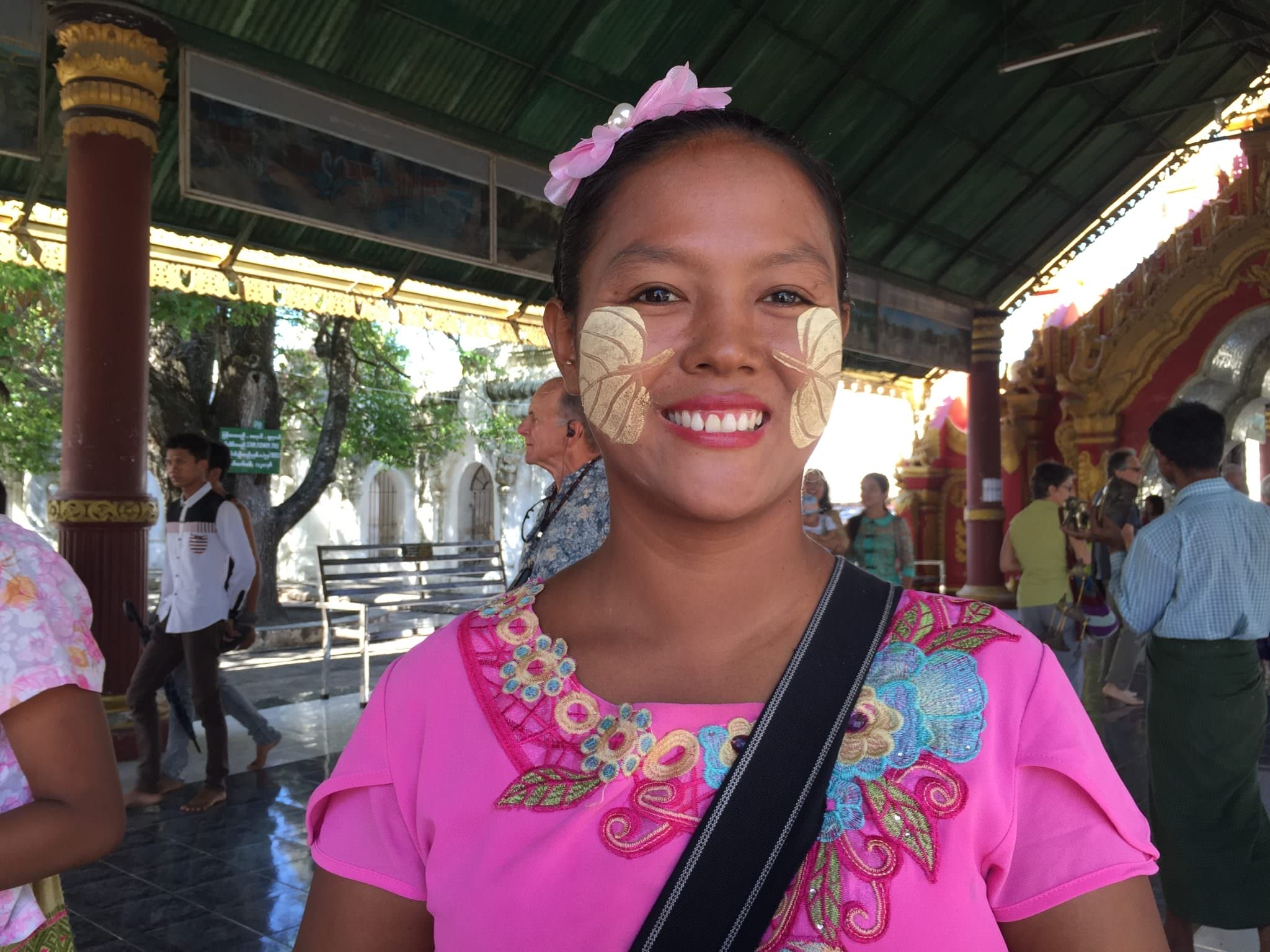
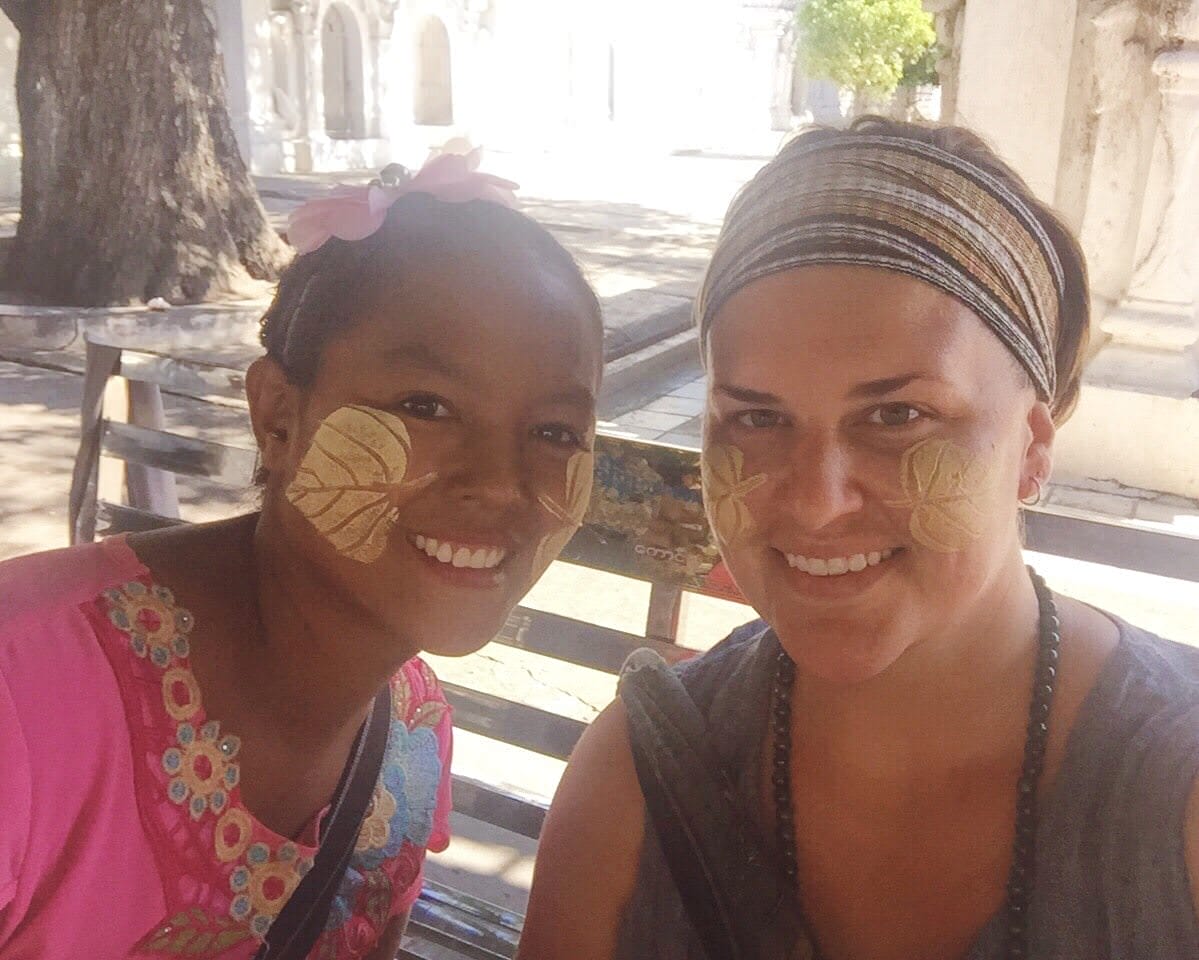
On my way around town, post-thanaka encounter, I heard hysterical laughter from a taxi (i.e. the bed of a pickup truck). The tiny space was packed with 20+ people. I looked closer and realized they were laughing at me…in the most loving, curious way. They were all rubbing their cheeks and laughing and saying “THANAKA! HAHA!” while pointing at me. I mean, to be fair, how weird and hilarious for them to see this 5’10” white woman wearing their traditional cosmetic. For that matter, from what I can see, there are all of three 5’10” white women in the whole of Myanmar, forget thanaka.
I walked over to the stopped taxi. They were just cracking themselves up and it was making me laugh. I made silly high fashion faces at them and posed like a runway model. I asked them if my thanaka looked beautiful and they all sang, “OH! YAAS! THANAKA! HAHA!” I leaned backward into the truck bed with my camera turned on them, which made them laugh even harder. They just didn’t know what to do with me. When I turned the camera around to show them our selfie, they all clapped and cheered… “THANAKA! HAHA!” Because how simple is it to have a human experience on the road? Do your cultural research, stay open to the randomness of travel, smile at strangers, say yes to (nearly) everything, and don’t bother taking yourself seriously.
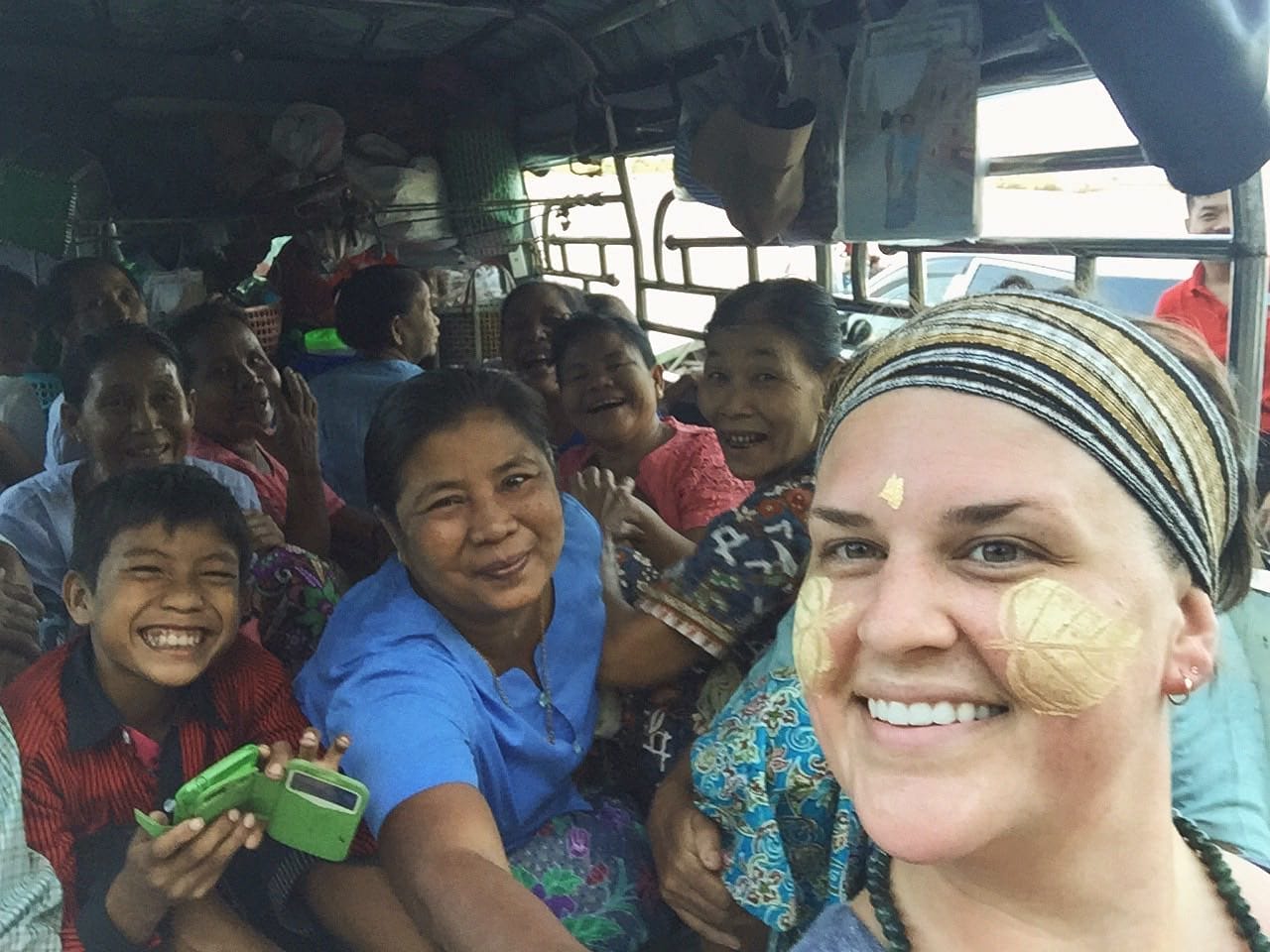
Back to the Viking tour at hand. After Kuthodaw we went to lunch at a restaurant in town and then onward to a full afternoon of handicrafts and artisans. We visited workshops making gold leaf, wood carvings, and kalagas. Each of these handicrafts deserve their own article. For our summary purposes, I’ll share a photo or two of each to give you an idea of the craft.
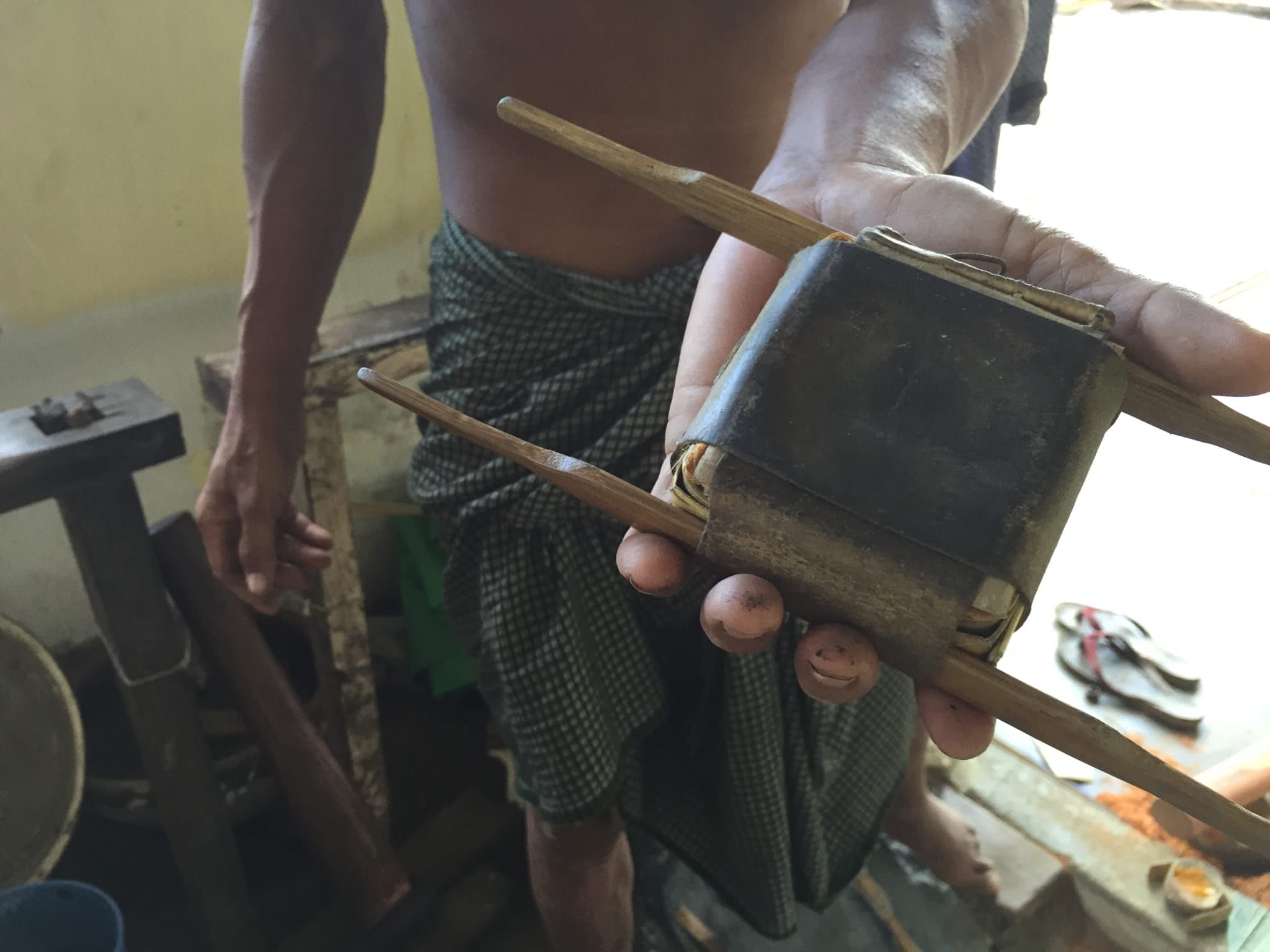

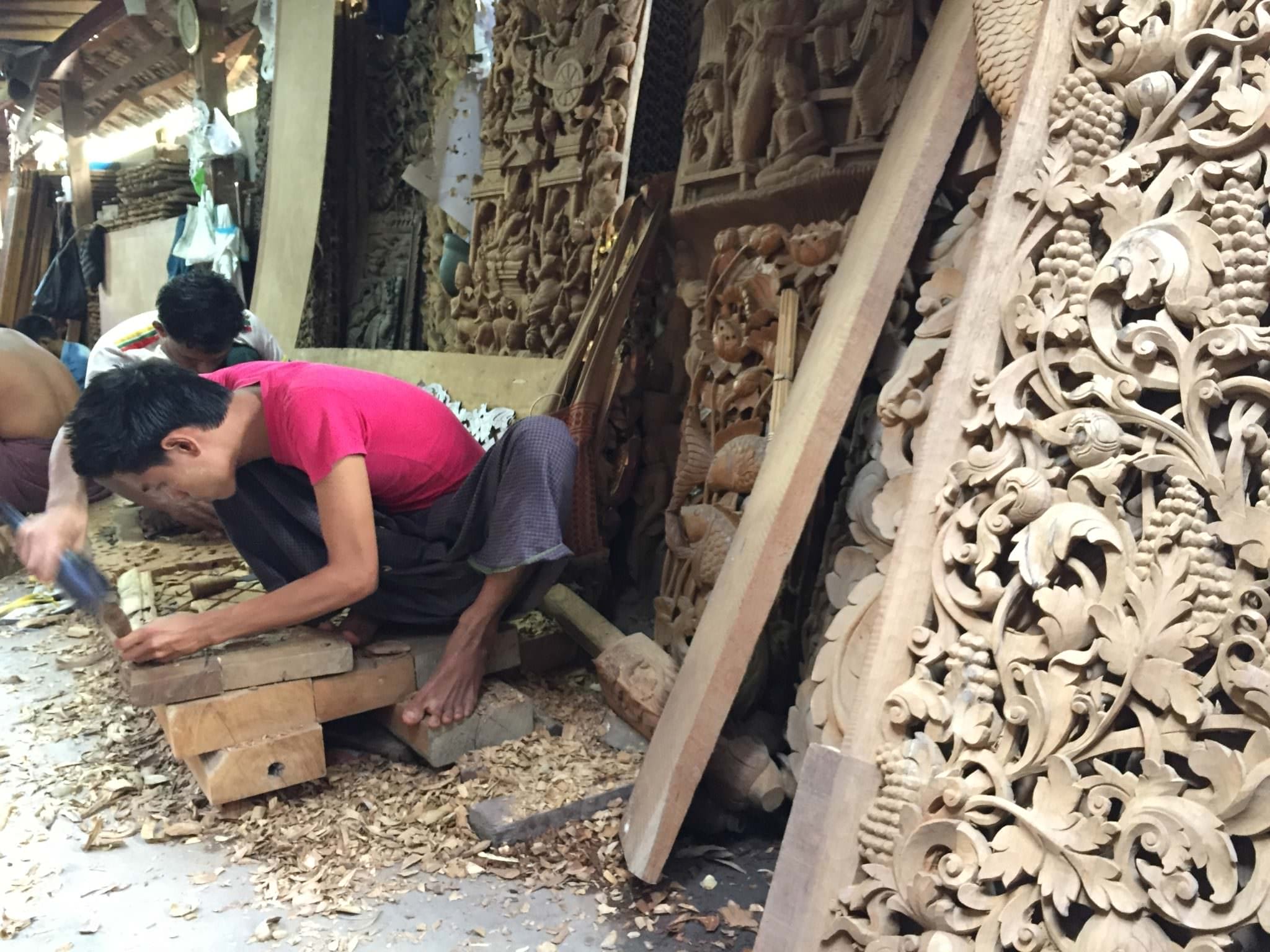

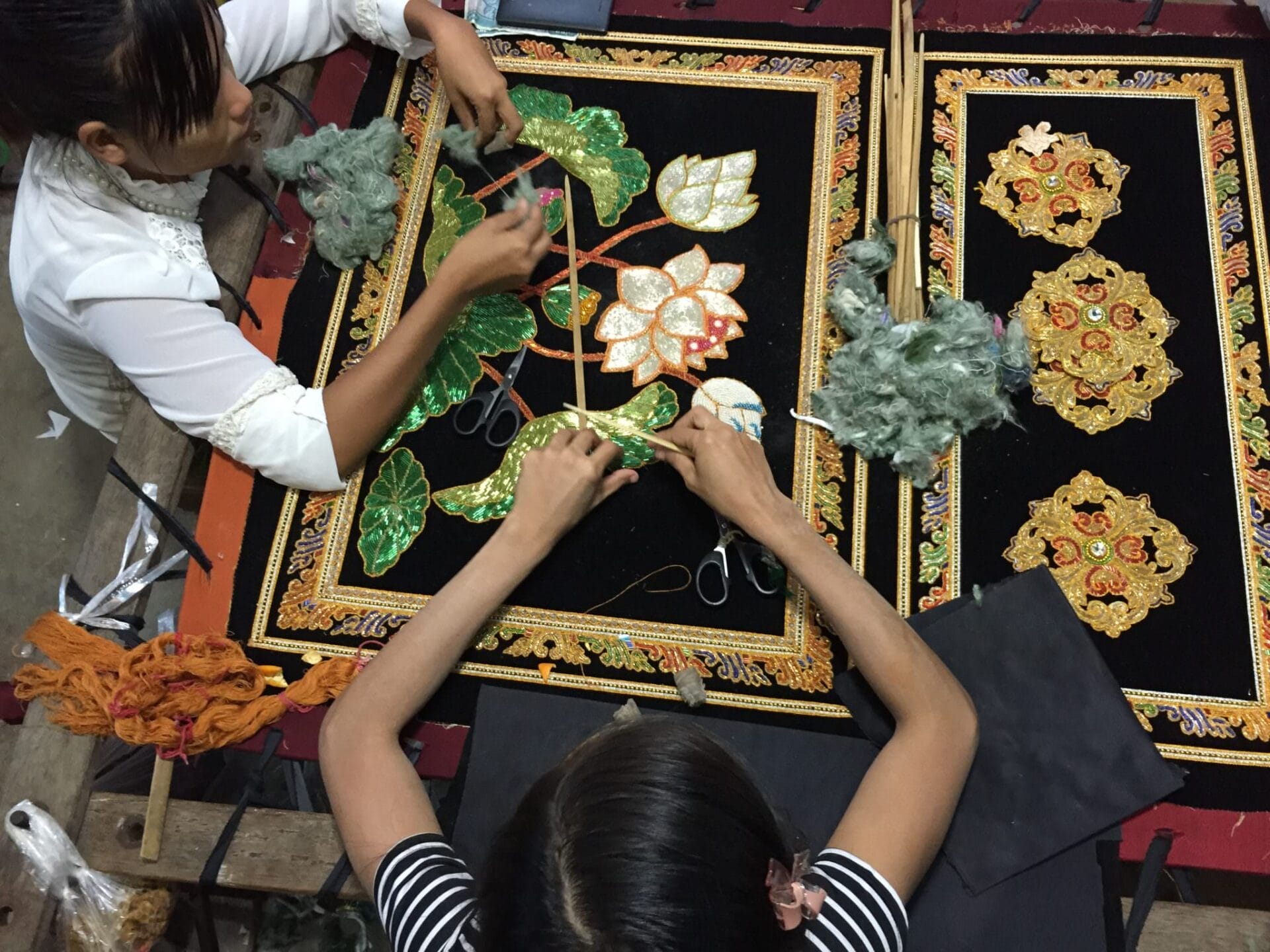
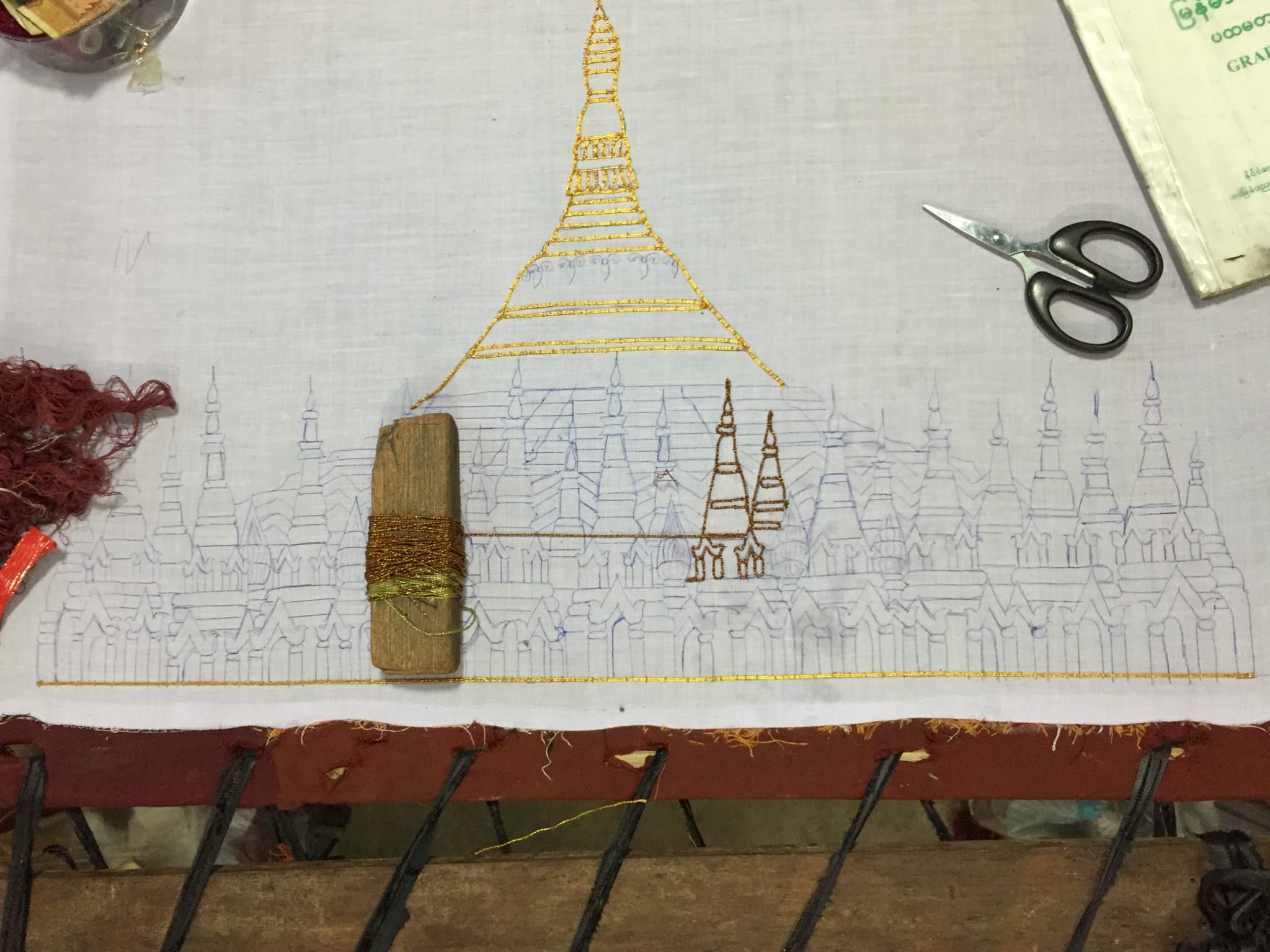

After everyone was all shopped out, Viking arranged a special surprise to cap off our busy day. Instead of taking a bus tour to visit the famous U Bein Bridge in the Amarapura suburb of Mandalay, we were treated to a gondola ride around Taungthaman Lake at sunset. Furthermore, the ships bartender surprised us in the middle of the lake, riding in his own gondola, handing out cold glasses of champagne with Program Director Nanda. It’s all in the details with Viking and they execute them well.
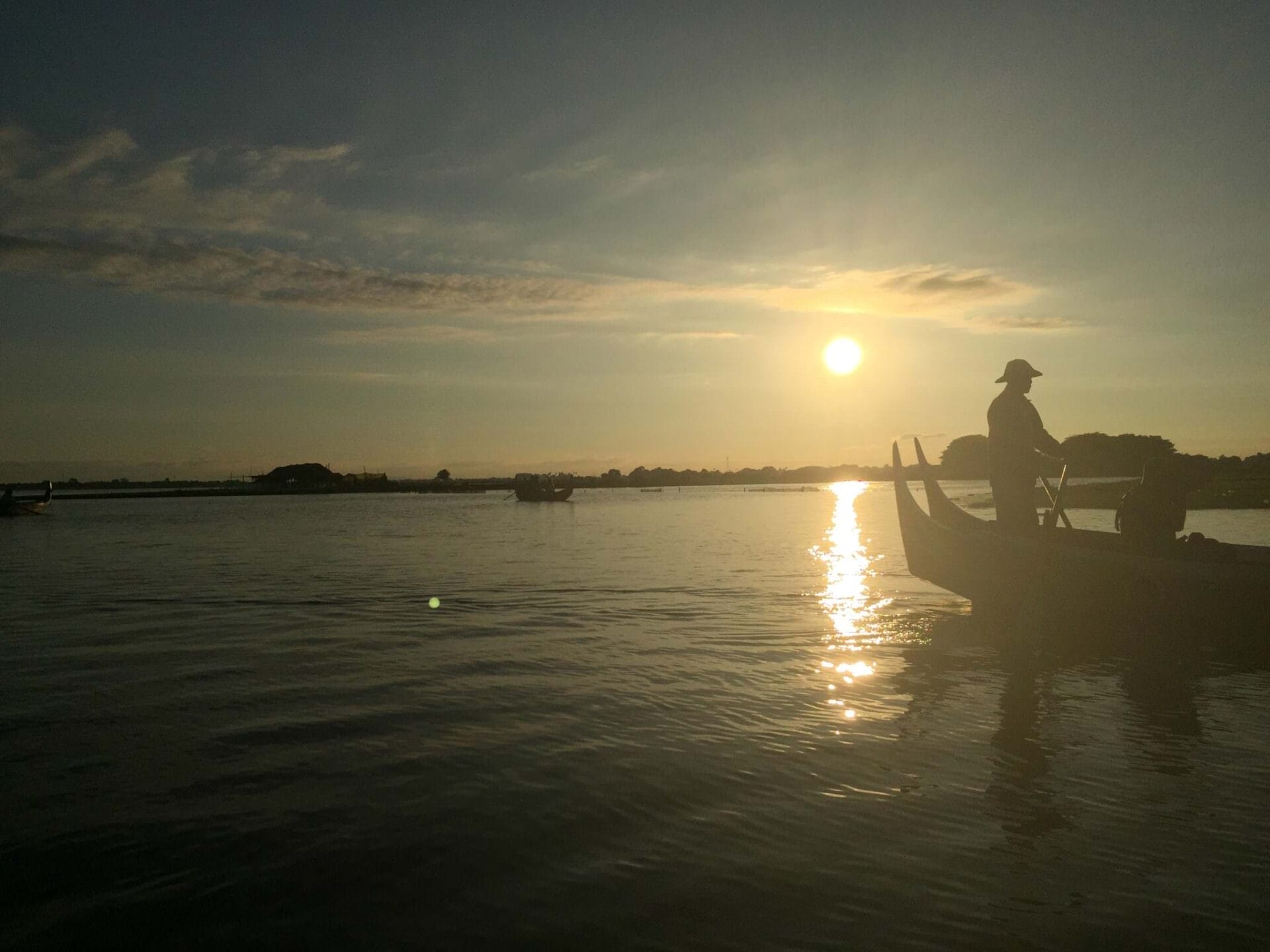

The 160-year old U Bein Bridge is constructed of teak wood reclaimed from the royal palace at Ava. Built in 1857, and still a high-traffic foot bridge today, U Bein is said to be among the oldest bridges in the world. It’s nearly 3/4 mile long. It can take 20 minutes to traverse the bridge at rush hour.
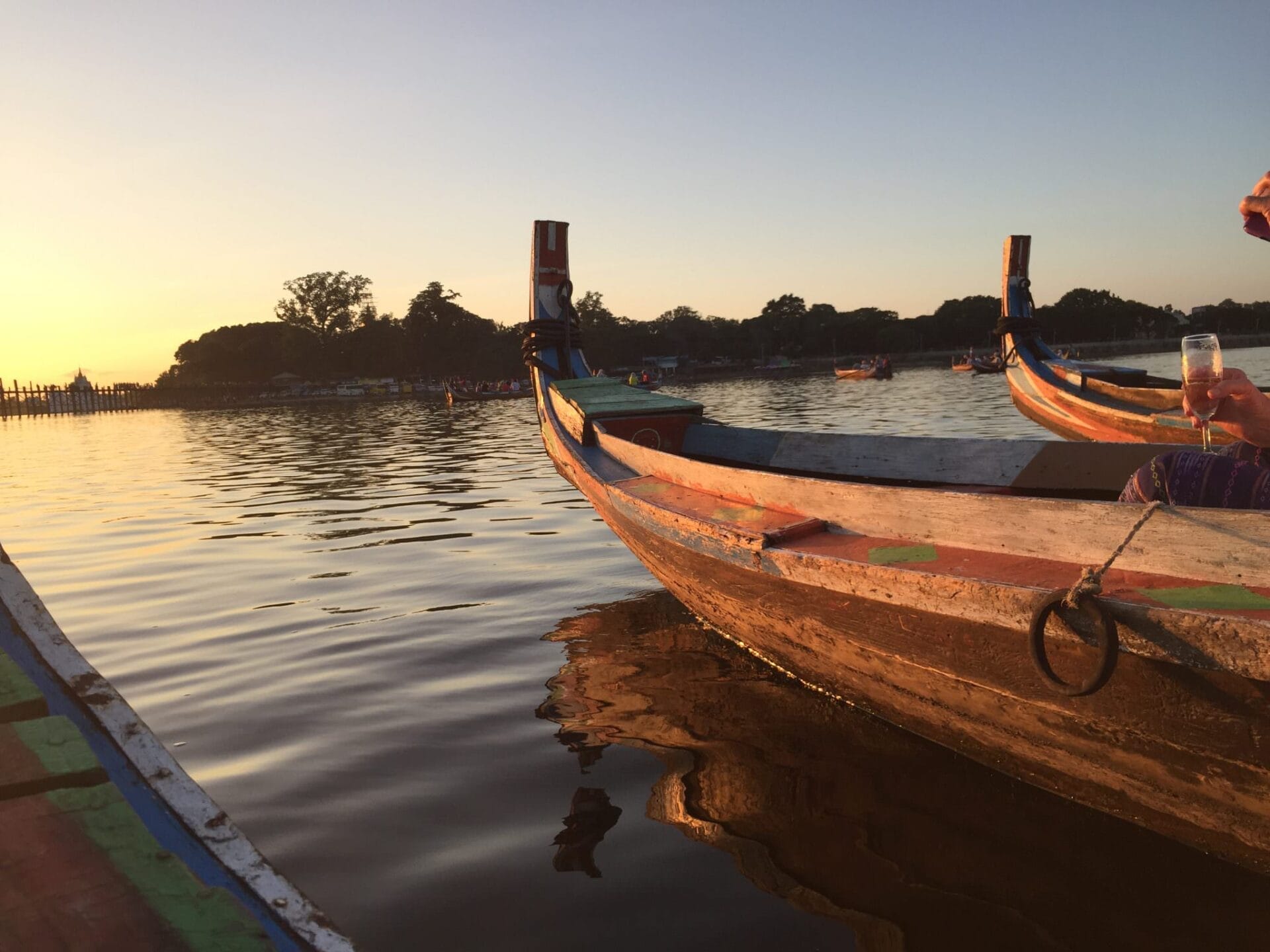
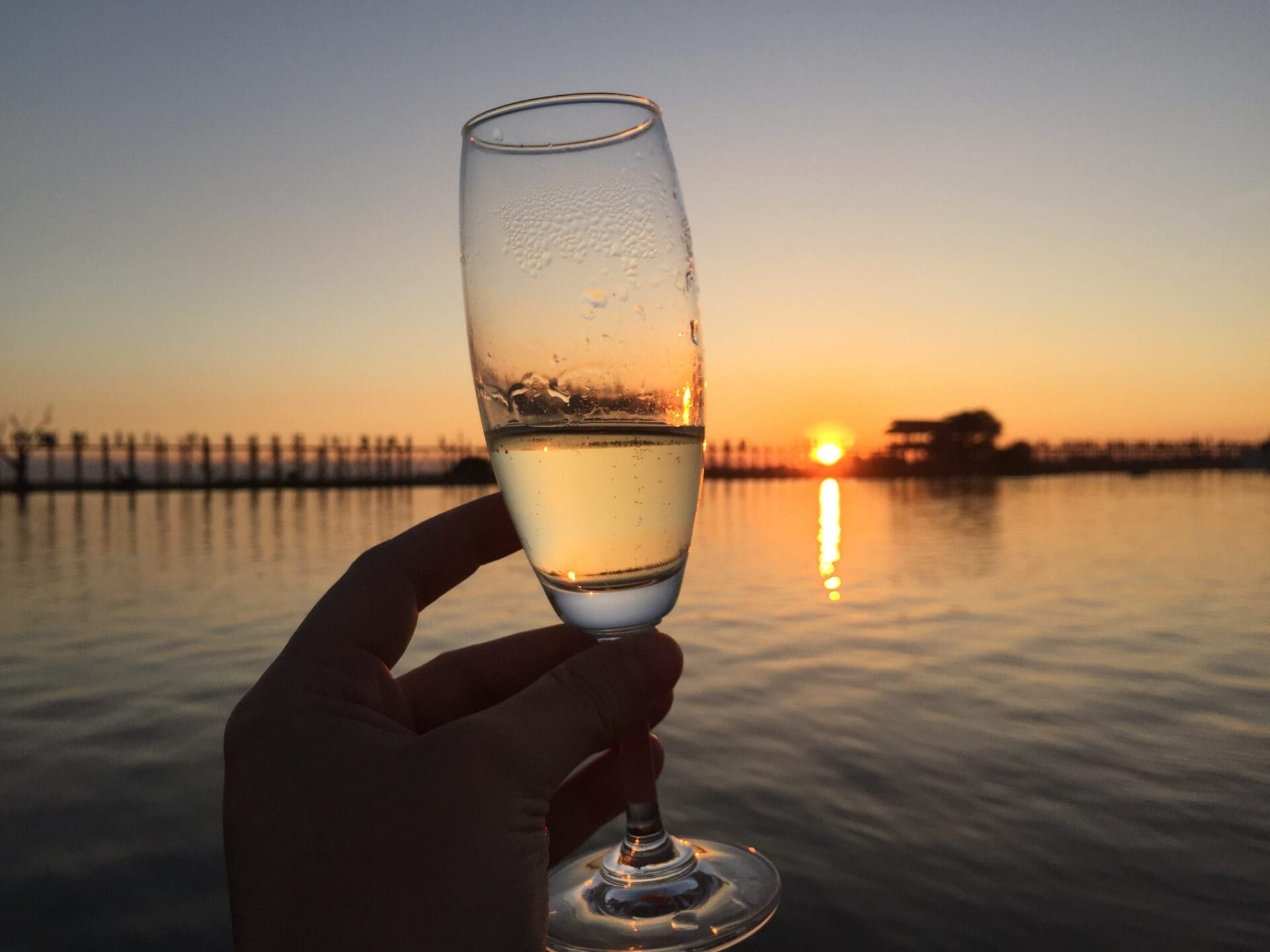
Until tomorrow’s voyage report, Cha Kwa!
gail
Our Voyage Report from Viking River Cruises’ Myanmar Explorer continues in the next article as we leave Myanmar’s cities in favor of exploring the small, riverside fishing village of Ohn Ne Choung. Be sure to come back and keep reading. You’re also invited to follow along with adventurer Gail Jessen on Twitter or Instagram.

